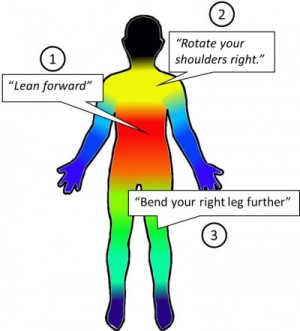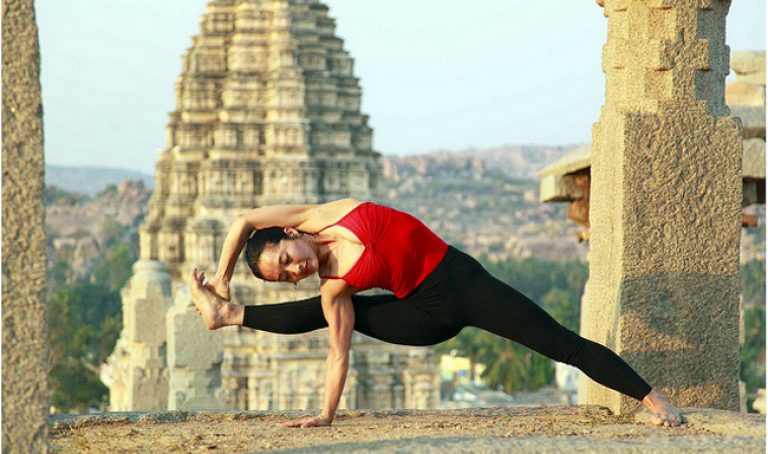
Asian Scientist (Oct. 22, 2013) – In a typical yoga class, students watch an instructor to learn how to properly hold a position. But for people who are blind or can’t see well, it can be frustrating to participate in these types of exercises.
Now, a team of computer scientists has created a software program that watches a user’s movements and gives spoken feedback on what to change to accurately complete a yoga pose.
“My hope for this technology is for people who are blind or low-vision to be able to try it out, and help give a basic understanding of yoga in a more comfortable setting,” said project lead Kyle Rector, a doctoral student at the University of Washington.
The program, called Eyes-Free Yoga, uses Microsoft Kinect software to track body movements and offer auditory feedback in real time for six yoga poses, including Warrior I and II, Tree and Chair poses.
Each of the six poses has about 30 different commands for improvement based on a dozen rules deemed essential for each yoga position. Rector worked with a number of Yoga instructors to put together the criteria for reaching the correct alignment in each pose.
The Kinect first checks a person’s core and suggests alignment changes, then moves to the head and neck area, and finally the arms and legs. For example, the program might say: “Rotate your shoulders left,” or “Lean sideways toward your left.” It also gives positive feedback when a person is holding a pose correctly.

The technology uses simple geometry and the law of cosines to calculate angles created during yoga. For example, in some poses a bent leg must be at a 90-degree angle, while the arm spread must form a 160-degree angle. The Kinect reads the angle of the pose using cameras and skeletal-tracking technology.
The result is an accessible yoga “exergame” (a video game used for exercise) that allows people without sight to interact verbally with a simulated yoga instructor.
The researchers believe that this can transform a typically visual activity into something that blind people can also enjoy.
“I see this as a good way of helping people who may not know much about yoga to try something on their own and feel comfortable and confident doing it,” said Dr Julie Kientz, a project collaborator. “We hope this acts as a gateway to encouraging people with visual impairments to try exercise on a broader scale.”
Rector worked with 16 blind and low-vision people around Washington to test the program and get feedback. Several of the participants had never done yoga before, while others had tried it a few times or took yoga classes regularly. Thirteen of the 16 people said they would recommend the program and nearly everyone would use it again.
Rector opted to use Kinect software because it’s open source and easily accessible on the market, but she said it does have some limitations in the level of detail with which it tracks movement.
Rector and collaborators plan to make this technology available online so users could download the program, plug in their Kinect and start doing yoga. The team also is pursuing other projects that help with fitness.
——
Source: University of Washington; Photo: Duane_Brown/Flickr/CC.
Disclaimer: This article does not necessarily reflect the views of AsianScientist or its staff.












